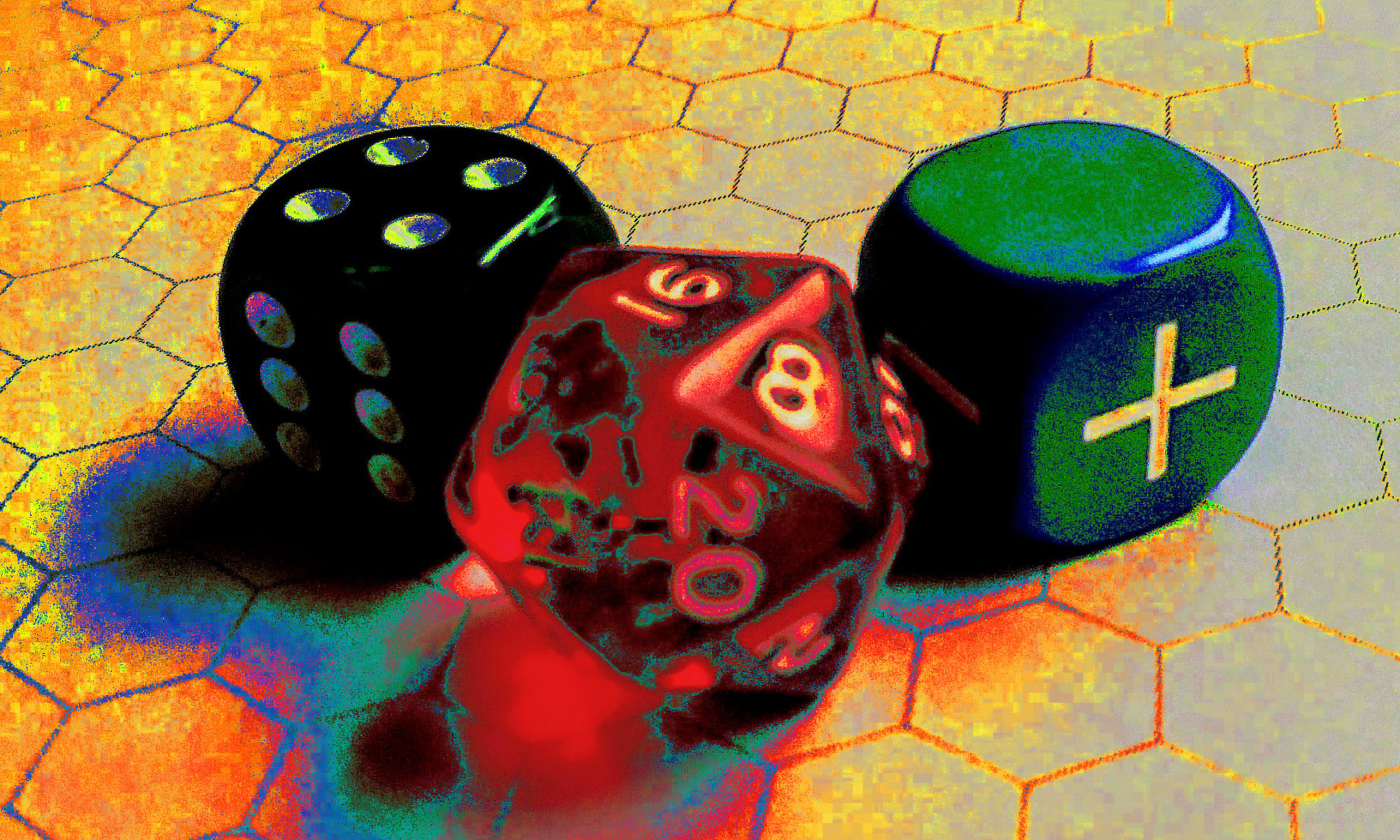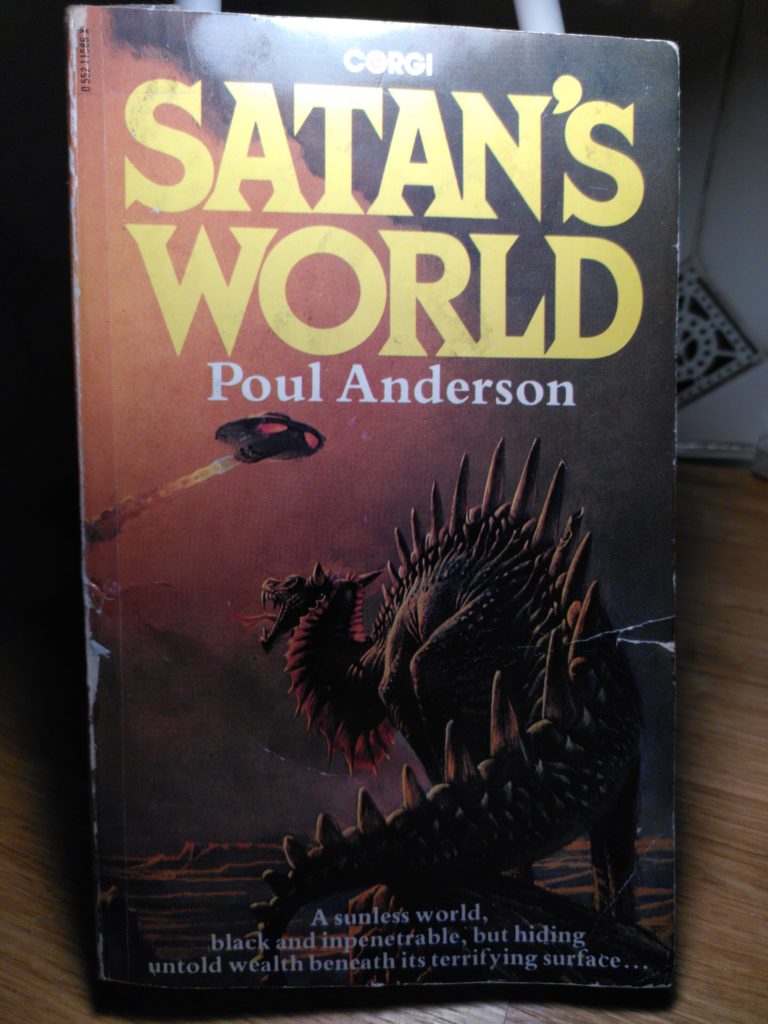It’s a sunny morning, last night’s storm has ceased. There have been no earth quakes for weeks now. The last tsunami to wash over our home islands is more then six months ago. Jolund our sage says better times will come: “Entropy … the forces of change … have had their way. The white moon is gone forever, the old imperiums and kingdoms of the northern continent are buried under the debris of their own hybris.” There are rumors of a new continent, too. It has been born far to the east. Brave young adventurers are daydreaming of proud ships, of vessels to carry expeditions, to find out what’s there …
These days, I find myself pondering whether to open up my D&D campaign again. The Grenzland-Kampagne had been going from 2016 to 2021. It started out as a red box Basic D&D game with B2 Keep on the Borderlands and turned into a 1:1-time, multiple player groups, OD&D campaign about half way through. You can find more on the Grenzland-Kampagne here (mostly in german), and I commented on grand campaigns in general over here (in english).
Now, I had a couple of issues with the Grenzland-Kampagne, that’s why I had decided to drive it to an end by early 2021. I guess I was also simply tired of it, DM burnout … that sort of thing. But as I said, I had some issues which led to that decision. Technically I didn’t want to simply call the game over, but I found an in game reason which led to a cataclysm: reckless gambling of ancient dragons had instigated mad cultists to destroy one of the two moons … they succeeded in a way, only the wrong moon was destroyed. I’ll come back to the moon story in a bit, now let me first come to the issues I’ve had:
Not our World …
While the campaign grew out of Keep on the Borderlands which sort of happend according to our shared imagination, I placed the Keep into the canonical Known World of Basic D&D, which was later expanded to the Mystara-Setting. While it’s a cool setting in it’s own right, it clearly isn’t ours. It’s tied strongly to the BECMI-Rules Set, to the Rules Cyclopedia and the Gazeteers. The more I think about it, the more it feels like somebody elses campaign. While I’m fine to play in Mystara for some time, I clearly wouldn’t want to follow along a prewritten campaign for years to come. And this long term focus are what Great Campaigns are all about, right?
… and it’s a mess!
I tried to cram into our campaign world as much as possible. At some point I envisioned it to be an all Old-School D&D campaign, like a sight-seeing tour that should lead from the Keep on the Borderlands to Hommlet and The Temple of Elemental Evil along a couple of OSR-Modules on to the GDQ modules, which were supposed to be the Greatest Adventures of All Time. And so the campaign world became an amalgam of Mystara and Greyhawk … and somehow the characters didn’t even care to go near the Temple … it was neither in the end. And now I’m not even so eager to reuse those old modules anymore. The emergent story telling that happend was much more interesting. These days I find emergent campaign play with proactive players, with multiple characters playing in multiple independent player groups, even to the point of player versus player war gaming, the most interesing bit of the game thats Original D&D!
… also the rules!
While this might not seem like a big issue, I was aways a bit unhappy with the rules. I had switched the campaign from Basic D&D to OD&D, but had applied a couple of house rules, thereby meaning to ease the transition. Still, those House Rules always felt a bit clumsy to me. It’s hard to pin down now. Maybe it’s just, that it didn’t feel like true OD&D to me, since we had started with something else.
As a side note: I like “white box” OD&D much better than Basic. It’s clearly the more flexible, more campaign oriented, rules set. And if you use the original d6 based hit points and damage system, it’s even less deadly than Basic. Also if you start out with just the three little booklets of 1974 and add new rules only very carefully and slowly it’s a much more open system, that can support anything your campaign might develop into.
Start with Earth
If you’re a listener of Ken and Robin Talk about Stuff, you’ve probably heard this advice before. While crazy fantasy world building is fun and interesting, most folks can relate to our own world much more easily than to the ramblings of one amateurish game master. While one could of course use a well known published settings like Middle Earth or the Star Wars Universe, that would throw us back to the Not our world issue. Alternate Earth scenarios like the Marvel Cinematic Universe or even Robert E. Howards world of the Conan Saga have the advantage of both worlds (that’s more than a pun in this case). They use the common knowledge everyone has of our World while adding fantastic elements liberally, justifying them with clever changes in the actual history of our planet. Thinking about Mystara, it’s true that Frank Mentzer tried to retcon, that Mystara acutally is our own Earth in his Immortals Rules Set. I’m not sure this idea was largely accepted … you’ll have to ask the Mystara crowd about that.
For one thing, discovering that Mystara was supposed to be Earth — at least in one particular timeline — led to the problem that I had set up our known world with two moons beforehand. Thus came the Idea to devise a catalysm that would get us rid of one moon.
So there you have it: our world of the Grenzland is actually our world. It has been Earth all along. Only way back in time, aeons back, when Earth still had two moons. Now the larger lawful moon of the old empires is gone forever. The smaller moon is still there. Luna, the moon of entropy and renewal. The new continent in the east will one day become known as Thuria. Later times will be known as the Hyborian Age … but that’s still aeons in the future, and not part of this campaign … unless of course they discover time travel …
Technically the original Grenzland campaign has four surviving player characters …
Samo: “today is brighter than yesterday, don’t you think?”
Liskolf pulls his thick fur cloak tighter around his shoulders, and looks up into the dusty clouds: “I think you’re right. Tonight I thought, I could catch a glimpse of the moon …”
Fardir looks around over the wastelands covered in grey snow: “Maybe we should follow Jonny, and also go south. I wonder if it’s warmer down there …”Samo: “Yes, I seem to remember stories of islands in the sea …”

